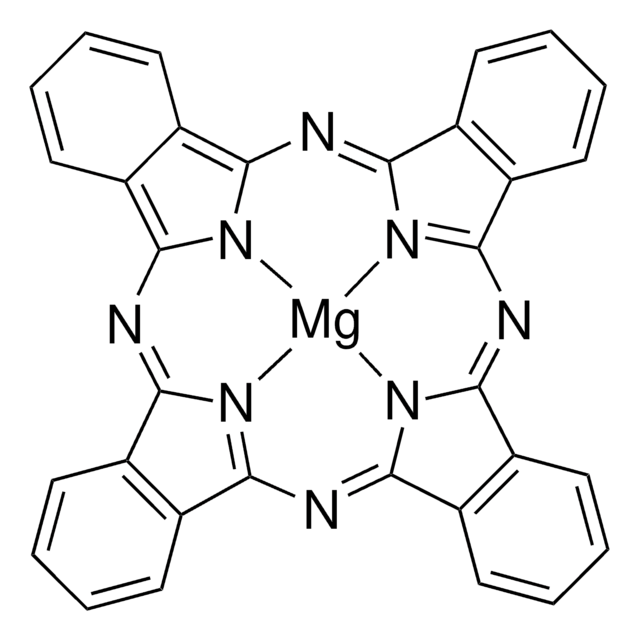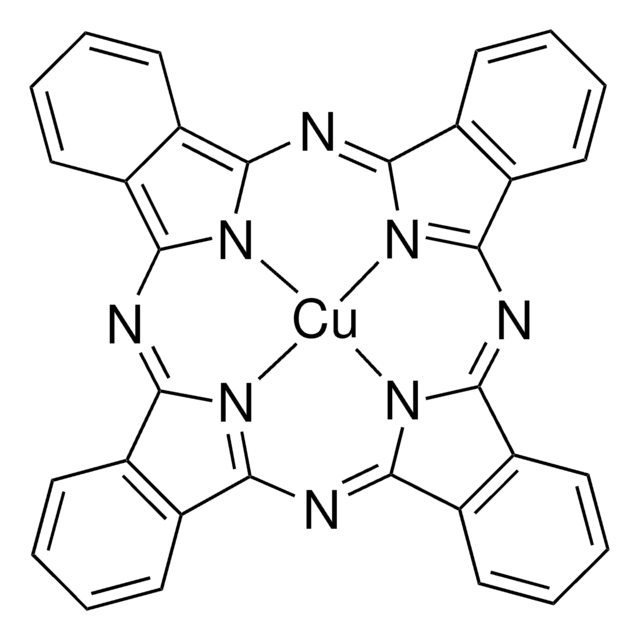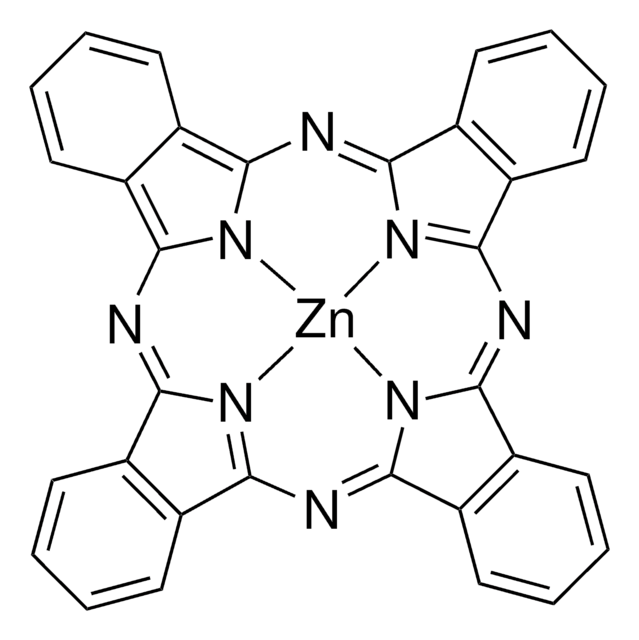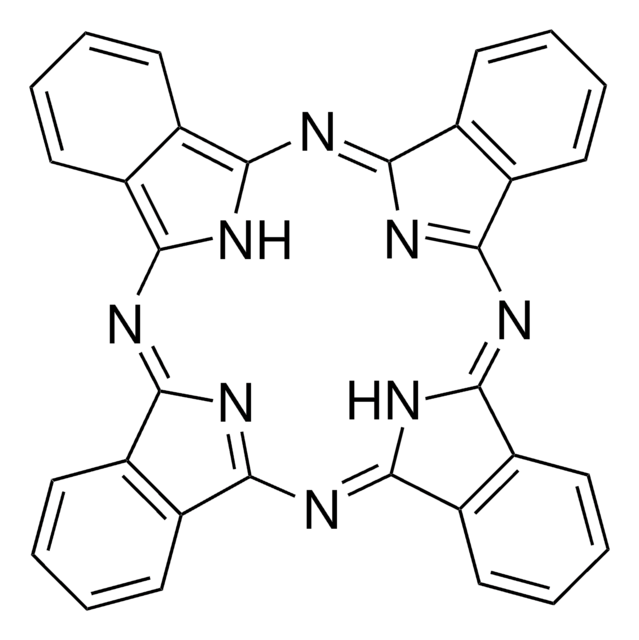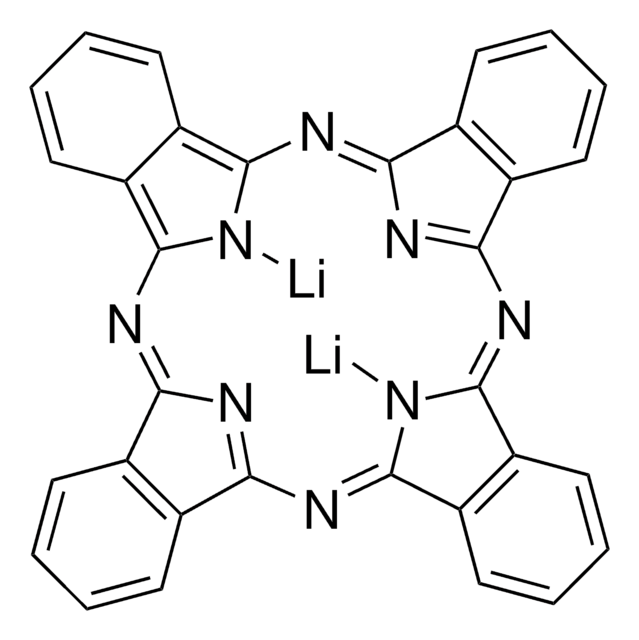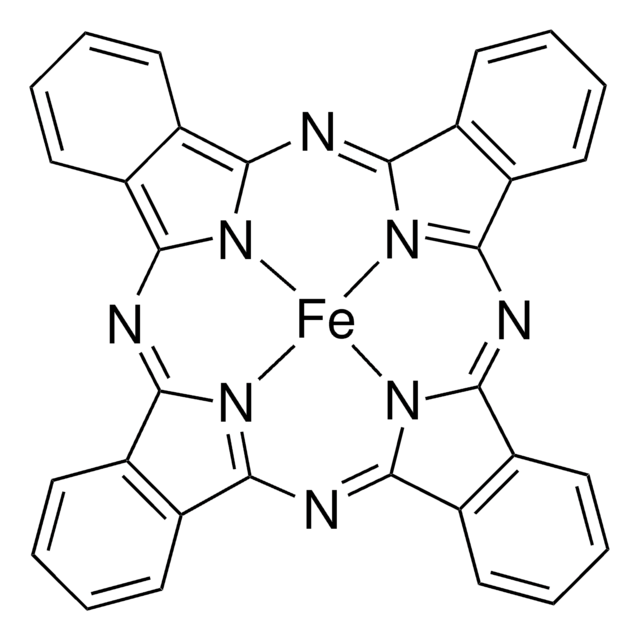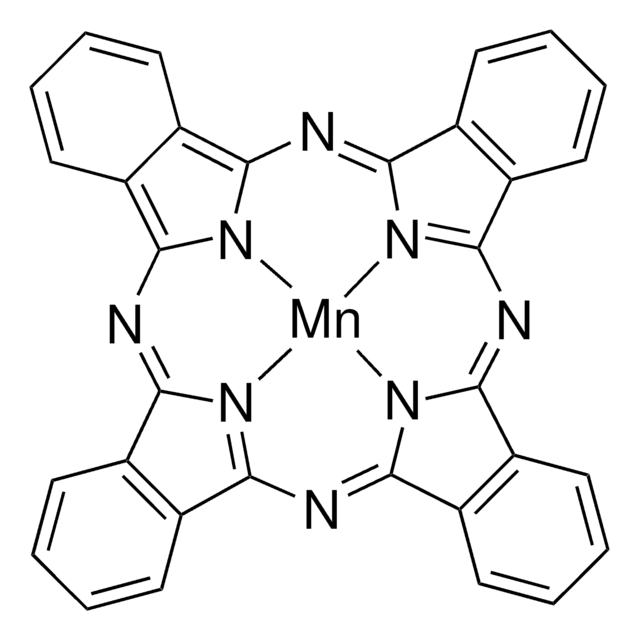931985
Phthalocyanine
Synonym(s):
Dehydrophthalocyanine, H2Pc, Pigment Blue 16
About This Item
Recommended Products
description
PL: 418 nm
μh ≈ 4.0 x 10−5 cm2 V−1 s−1
Quality Level
mp
>300 °C (dec.)
transition temp
Tg >350 °C ((0.5% weight loss))
solubility
DMF: soluble
Orbital energy
HOMO 5.35 eV
LUMO 3.35 eV
UV absorption
λ: 279 nm Amax
λ: 693 nm Amax
SMILES string
c1ccc2c3nc(nc4[nH]c(nc5nc(nc6[nH]c(n3)c7ccccc67)c8ccccc58)c9ccccc49)c2c1
Looking for similar products? Visit Product Comparison Guide
Application
In the field of organic electronics, H2Pc has been explored as a popular Hole Injection Layer (HIL) material for organic light-emitting diode devices (OLEDs).This special compound has also been explored for solar cells application given its robust and intensely colored macrocycles (blue pigments) with high chem., thermal and light stability, properties that are of paramount importance for realistic photovoltaic applications. H2Pc have attracted special attention as photosensitizers for dye-sensitized solar cells (DSSCs).
In biomedicine, phthalocyanine can serve as selective fluorescent probes for bioanal. and bioimaging, and as efficient photosensitizers for photodynamic therapy of cancer and other non-cancerous conditions.
related product
Storage Class Code
11 - Combustible Solids
WGK
WGK 1
Flash Point(F)
Not applicable
Flash Point(C)
Not applicable
Choose from one of the most recent versions:
Certificates of Analysis (COA)
Sorry, we don't have COAs for this product available online at this time.
If you need assistance, please contact Customer Support.
Already Own This Product?
Find documentation for the products that you have recently purchased in the Document Library.
Our team of scientists has experience in all areas of research including Life Science, Material Science, Chemical Synthesis, Chromatography, Analytical and many others.
Contact Technical Service